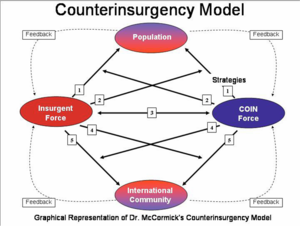 Brains and Bullets: How Psychology Wins Wars by Leo Murray
Brains and Bullets: How Psychology Wins Wars by Leo Murray
My rating: 5 of 5 stars
Brains and Bullets is an excellent and very readable book which tries to put some hard numbers on a variety of psychological tactics that can be used to persuade your own troops to fight and the enemy to give up.
This is an excellent work on what happens in combat and why. It is very readable, structured into bite sized chunks on the key phenomena and then some joining up when it has all been explained. Each chapter opens with an account from a real soldier who experienced that psychological effect in combat. This is then analysed and explained, pulling in other examples as required to show that it isn’t an isolated incident but a general effect. Those examples range from the Napoleonic Wars right up to operations in Afghanistan, and they’re the products of proper scientific research not just a collection of war stories from unreliable sources.
That said there is no need to be an operational researcher, or scientist to understand the book. The language used is straightforward and direct, each of the concepts is very well explained and it forms an excellent introductory work as well as being well researched. The target audience is ordinary people without a technical or military background (although the author hopes that many military officers and civil servants will read it and think about it). Here’s my favourite line from the end of the book “if you are paid to be a military analyst, don’t forget that you work for the Crown (or the people) and for soldiers. You owe no allegiance to your cost centre manager. Crack on.”
If you do have a serious interest then it is worth saying that this isn’t fluffy pop psychology (I like those as light reading, having read Psychology at uni). All the conclusions are backed up with hard numbers from years of solid operational research. The author is hoping to influence army officers to use tactical psychology to make them more effective, so for example “even the hardest-fought flank attack seized ground with a smaller force, captured more of the enemy and caused fewer fatalities on both sides. flanking attack was six times more effective than a frontal attack.”
I’m not going to summarise this book like I did for the Stress of Battle, it’s way more available and affordable. Go buy it yourself (or borrow from the Library) and enjoy it. I certainly did.















